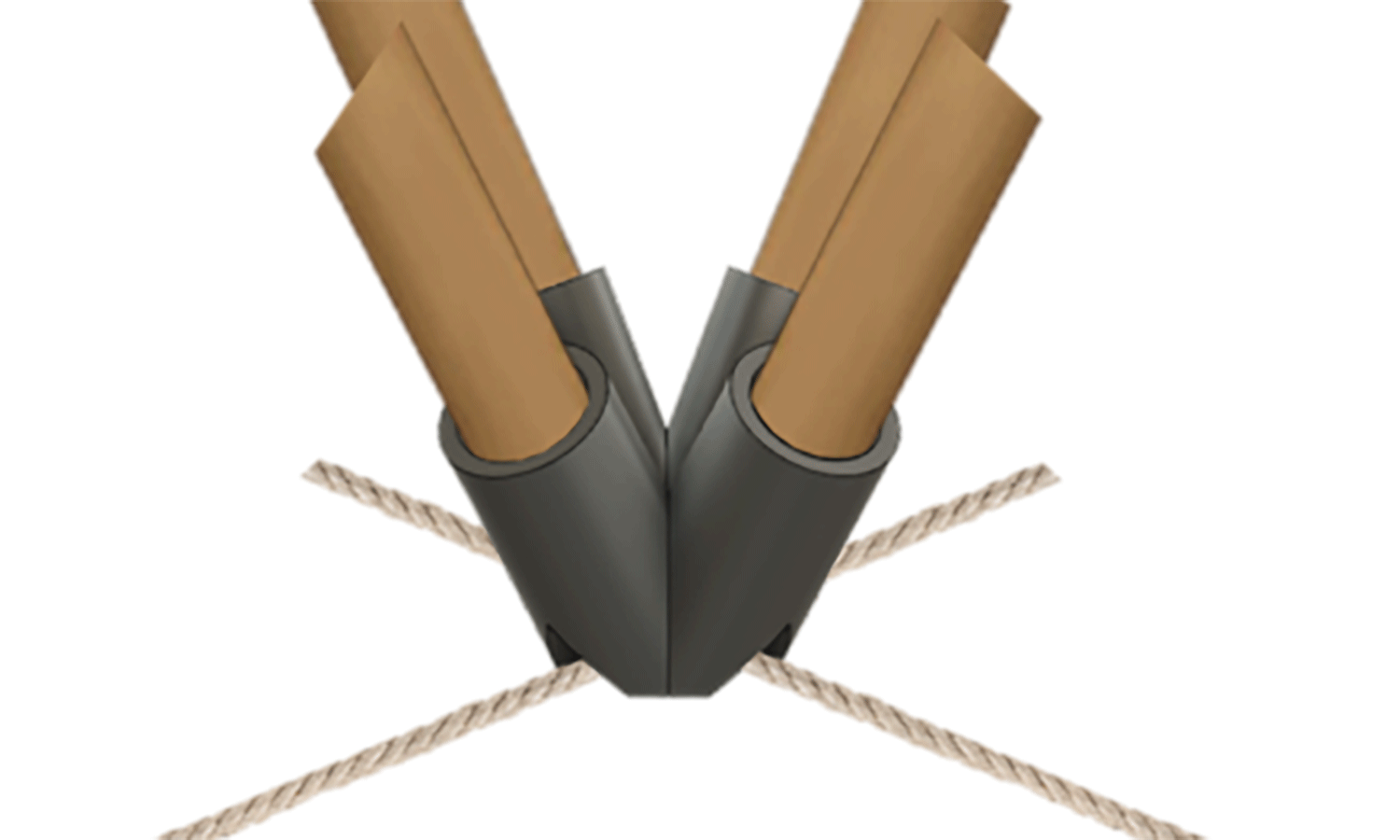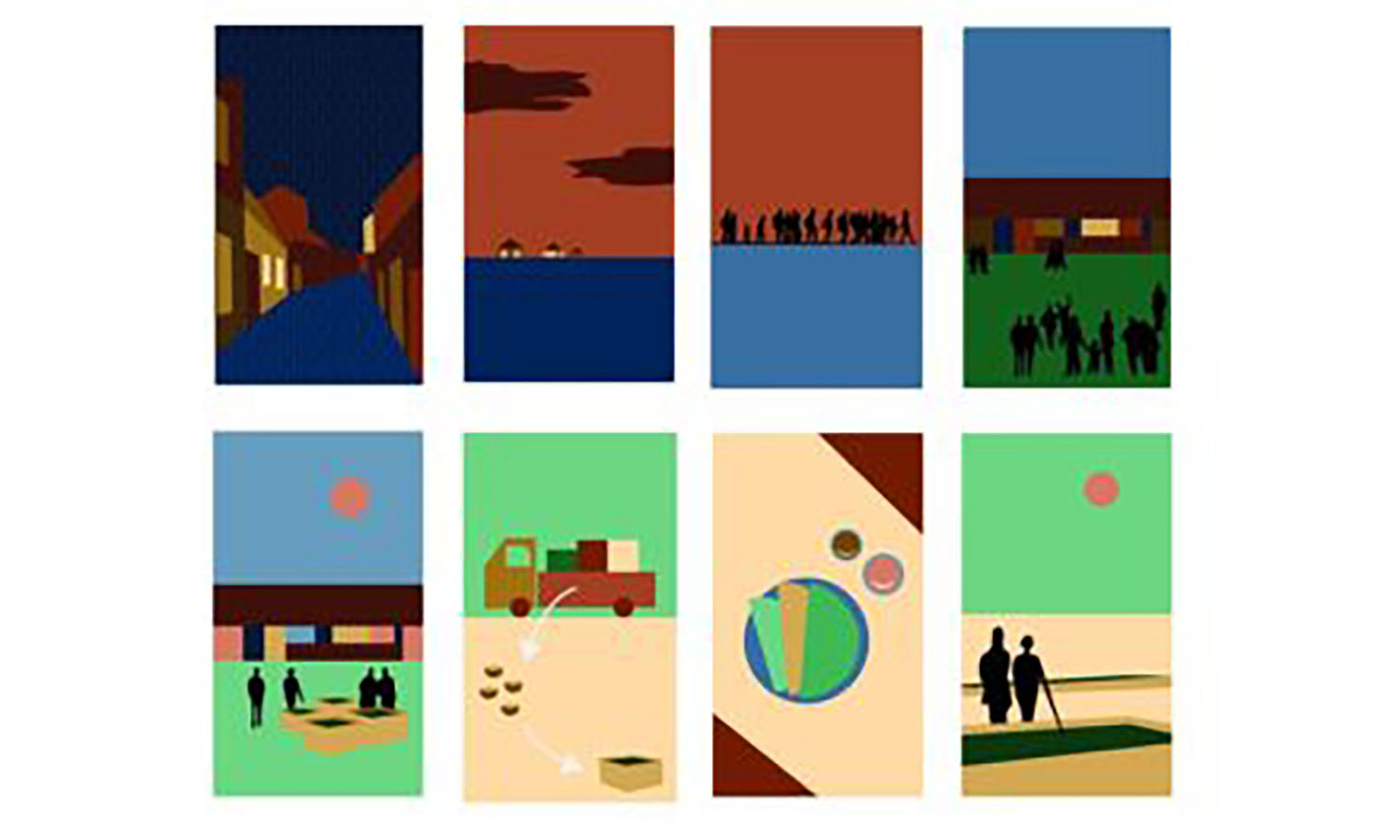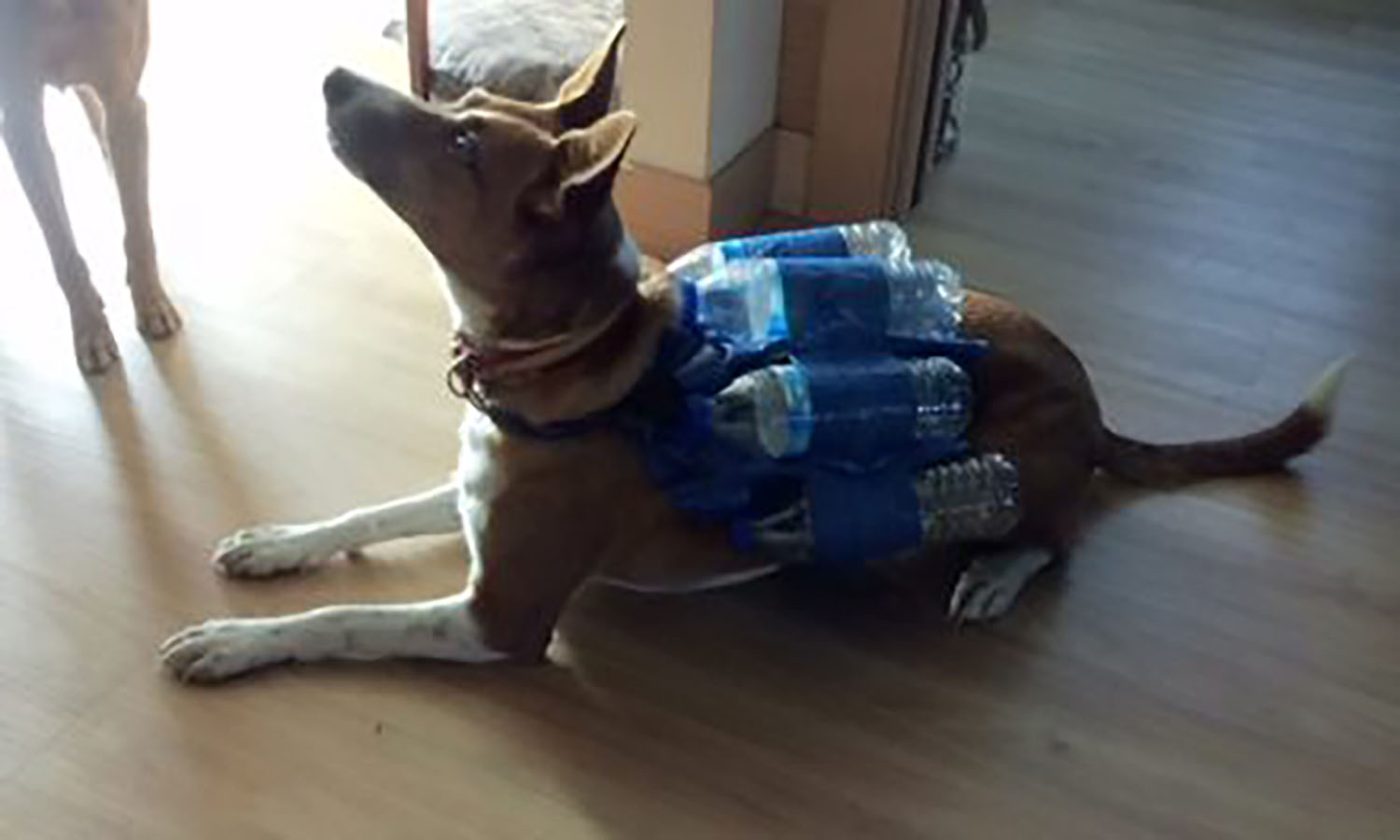p dir= »auto »>A low-tech brick-press in open source, achievable in a Fablab
ISABELLE BRICK-PRESS
Our first prototype is based on the Isabelle brick press machine from Beteze; a multi-disciplinary group of young people based in Barcelona Beteze.org.
Their file, in open-source, is made for a welded metal press. Our initial test, made of 6 mm MDF and all the parts glued together, gave us the opportunity to try the machine and to find ways to improve the press.
REVISITED ISABELLE BRICK-PRESS
Our aim is to make a low-tech brick press that can be assembled, without nails or glue. This means it will be easily transportable, mountable and per definition cheap. Therefor we needed to revisit the way the machine was joined, we had to realize the same machine but in a Fablab approach.
This machine would be useful in the post-flooding period, more exactly for the reconstruction or construction of houses. And the brick presses could also be used in any period in unreachable villages, where it is almost impossible to bring bricks, it would permit to make the bricks in situ, stronger than the ones made in a mold.
REVISITING THE REVISITED
After we realized the Isabelle press was achievable in Fablab, we wanted to create a brick-press that would be easier to use and more compact, so cheaper and easier to carry. We thought of making one where we could exercise the strength with the foot.
WHAT NEXT?
The actors concerned by this project are: Beteze at first, then us (3 architecture students of ULB, Brussels), then Trivandrum’s Fablab and we hope a lot of other people through the open-source network. We also hope that people knowing more about the technical aspects, such as engineers will help improve this machine. Our biggest fear is the breaking due to the compression force. Something we tried to solve by using thicker material and the least glue possible.
We thought about replacing some MDF parts submitted to the biggest compression by metal parts, something we did not have the time to try out. This could be a way to develop the brick-press. Maybe just a few small parts could be substituted to avoid collapsing, this would allow to make a much cheaper brick press than if it would entirely have been welded in metal. More affordable because MDF is cheaper and less skilled labor would be needed.
To conclude, our goal in not only to help people in post-flooding situation, but to help people in general rebuilding or just building houses with locally available raw materials.
And how? By creating the cheapest brick-press we can.
Why cheap? Because it is made in MDF in a Fablab, light to transport and easy to assemble. It would allow families, who could otherwise not afford it, to build solid houses and to use the money they would have used to buy bricks for something else.
Why a brick-press? It would help people in unreachable villages where it is too difficult to bring bricks. It would permit to save money and to create stronger bricks than the one made by hand with a mold.
The extended network of Fablabs would permit a quick distribution of the file. This file would be in open source and could be improved by other people. We hope this machine will just evolve with the time and needs and will stay affordable for everybody.
Process : From shelter, to kitchen, to brick press
A lot of changes

COLLECTING INFORMATION
THE SHELTER’S STRUCTURE
Following past summer’s floods in Kerala, India, we, Belgian architecture students, had to create an object to help Indian people. We first heard they got a kind of emergency kit with a tarpaulin and various other things. Our first idea was to create an innovative structure to support the tarpaulin, so the people in camps could easily build shelters. Michael (an engineer and logistician) told us people were “staying in camps many years” and “people in camps have no education and even the things you and I find simple can be very challenging for them” “IOM and UNCHR who helps to build them (the shelters)”. We tried to build some structures but we had some trouble with the size of the tarpaulin that was way to small to build en entire shelter for one family. After that we learned that shelters built with tarpaulin, even the ones built by engineers from NGO’s, were not resisting well to really heavy rainfall.
THE KITCHEN
For those reasons, we decided to work on the social aspects in the camps; therefor we asked ourselves what was so essential to the Indian culture. Our answer came to the food and the entire ceremony around cooking. This queried the women’s position in the camps, as cooking seems to be something really important that has been transmitted from generation to generation. We were already planning to make a kind of mobile kitchen or a tool to build a tandoori oven but after a Skype conversation with Trivandrum’s Fablab we learned that the entire cooking issue was one of the first problems solved in the camps.
SOMETHING MORE SUSTAINABLE
At that moment we had an answer from an organization from the moment we were still working on the tarpaulin shelter, Nishant Aggarwal from Sewa international “Regarding your query on tarpaulin, latter is mostly given for initial survival for 1-2 months in areas which are difficult to reach as its relatively easier to transport/construct compared to Tin Sheds/Brick structures etc. However, tarpaulins are ineffective for heavy rains/cold seasons, so they just provide a nominal shelter to tide over the initial period of Relief/Rescue till Govt/Aid arrives. During the next phase of Rehabilitation, they need to move to more permanent structures, which are resilient from floods/earthquakes etc. So, in our opinion, this is where help is needed to provide cost-effective disaster-proof structures which can be built easily, preferably from locally available materials like soil, wood, rocks etc.”
We still needed somebody on site who could give us more information because Nishant was not answering any longer, through a lot of people we ended to get in contact with Anu Jacob, an evangelist based in Kerala with whom we exchanged some messages and calls. He told us he was working with a team of volunteers, they could build a house made of bricks and corrugated galvanized steel roof sheets for 3.000$. He sent us pictures of those houses and a video Construction site video Kerala, 2018) showing us how women were carrying 6 to 8 bricks on their head to the construction site. This information really helped us a lot, from those pictures we knew what kind of materials they needed to build new houses and we could even count how many bricks they needed to build an entire house.
According to Anu Jacob, and Nishant : we finally decided to work on the post flooding phase, (re)construction, because it seemed to be one of the main priority to help people.
Optimizing this kind of constructions could be achieved by increasing the construction rapidity or its solidity. This last point seemed a bit difficult to solve because we want to use local materials and conserve the same construction typology.
Finding a way to construct even more local and to save money and time could be a solution to help Indians to rebuild their houses, in this way the low-tech brick press makes sense.
From a picture we counted they needed more or less 2.000 bricks to build an entire house, while damaged houses need far less to be back in state.
The necessary brick presses per village would be minimal because construction is a community activity.
The first phase of the process was mostly based on finding a lot of information rather than building prototypes, we first needed to be sure we would be working on a useful project. All the information we collected and the contacts we managed to have with people based in Kerala, led us to the brick press. Once we were sure this would be our project we started our second phase of process : our tests and prototypes.
STARTING THE TESTS AND PROTOTYPES
We first had to understand how clay bricks are made ; therefor we made a lot of research and read a lot about clay. Once the clay collected, we needed to analyze it, therefor we had to mix it with water and let it settle for a few days. This gave us its composition, we could measure the percentage of its components due to this we knew our clay was really clayey.
After that we made small clay balls mixed with different materials and let it dry to see which ones would be the most resistant.
At the same time we made a brick mold, we tried to realize a brick but it came out that our clay was way too sticky. We also started to create a brick-press model we found online in open-source. The model we found was the one of a metal press, once realized it permitted us to understand its way of functioning. This permitted us to realize we had to change some specific parts.
Our first prototype was made with the laser, our aim was to make the final brick press with a thicker material, therefor we would have to use the CNC machine. None of us knew how to use it so we had to do the training. Once we tried to cut the wood plate we had some troubles because the drill we chose (6mm) was not precise enough, so it was not cutting the right angles but it was making curves, we only had time to cut one the 4 plates we wanted to. We had to come back the day after with a thinner drill, a 3mm one.
Dogbones, the extension of the program Fusion, the program to make the CNC machine was not working correctly, that was an other big trouble we had, we had to draw everything again.
This process led us to entire revisiting of the Isabelle brick press.
Except where otherwise noted, this work by ULB / DFS-Q1 / 2018-2019 is licensed under a
Creative Commons Attribution-NonCommercial-ShareAlike 4.0 International License.












